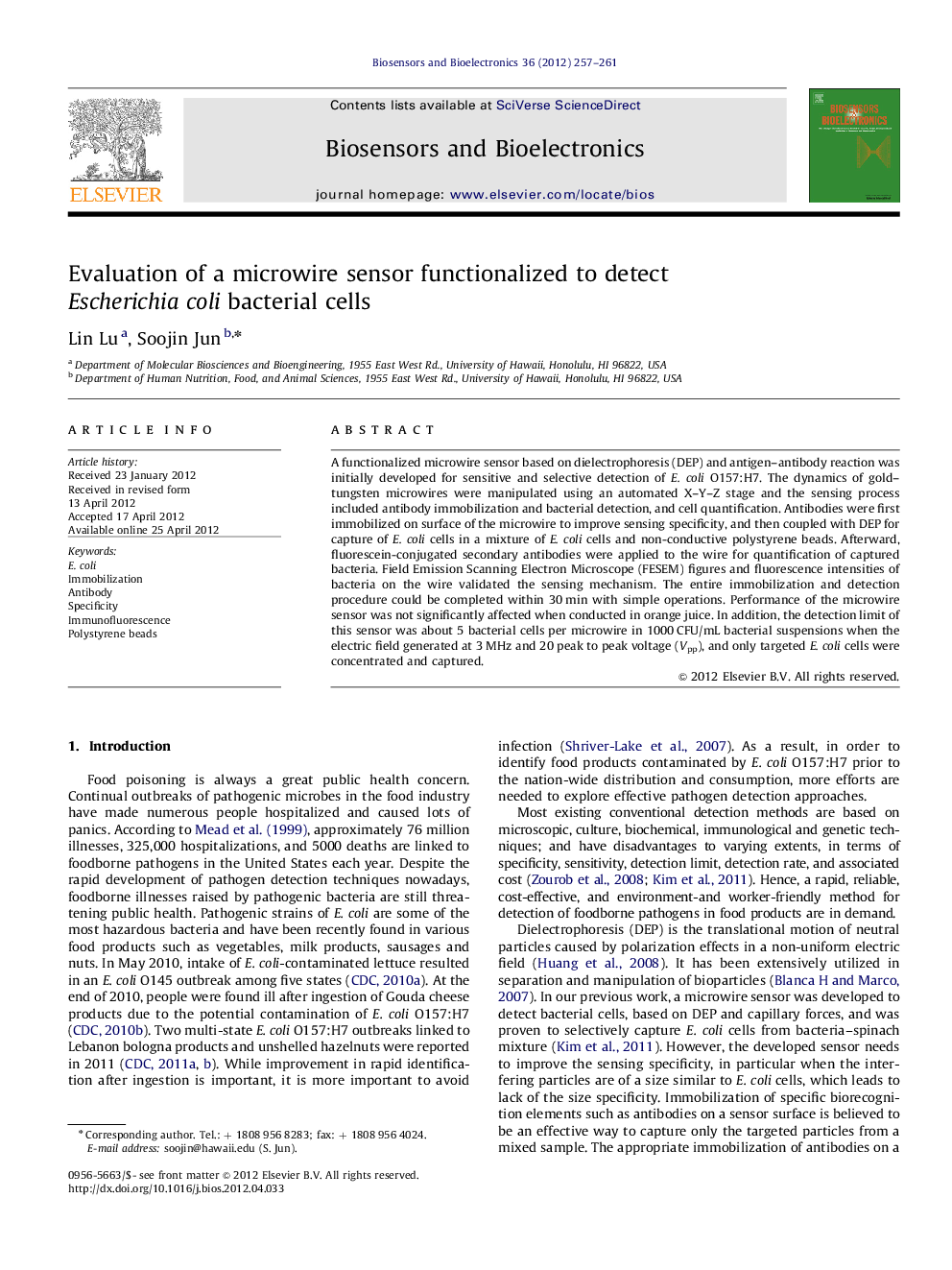| Article ID | Journal | Published Year | Pages | File Type |
|---|---|---|---|---|
| 867523 | Biosensors and Bioelectronics | 2012 | 5 Pages |
A functionalized microwire sensor based on dielectrophoresis (DEP) and antigen–antibody reaction was initially developed for sensitive and selective detection of E. coli O157:H7. The dynamics of gold–tungsten microwires were manipulated using an automated X–Y–Z stage and the sensing process included antibody immobilization and bacterial detection, and cell quantification. Antibodies were first immobilized on surface of the microwire to improve sensing specificity, and then coupled with DEP for capture of E. coli cells in a mixture of E. coli cells and non-conductive polystyrene beads. Afterward, fluorescein-conjugated secondary antibodies were applied to the wire for quantification of captured bacteria. Field Emission Scanning Electron Microscope (FESEM) figures and fluorescence intensities of bacteria on the wire validated the sensing mechanism. The entire immobilization and detection procedure could be completed within 30 min with simple operations. Performance of the microwire sensor was not significantly affected when conducted in orange juice. In addition, the detection limit of this sensor was about 5 bacterial cells per microwire in 1000 CFU/mL bacterial suspensions when the electric field generated at 3 MHz and 20 peak to peak voltage (Vpp), and only targeted E. coli cells were concentrated and captured.
► Rapid and accurate single step detection of foodborne pathogens. ► Combination of dielectrophoresis and bioaffinity reaction to enhance the sensing sensitivity. ► Validated sensitivity and specificity of the developed sensors. ► Quantitative analysis of bacterial cells using the fluorescence microscopic technique. ► Can be used for food and water quality control and management.
